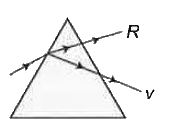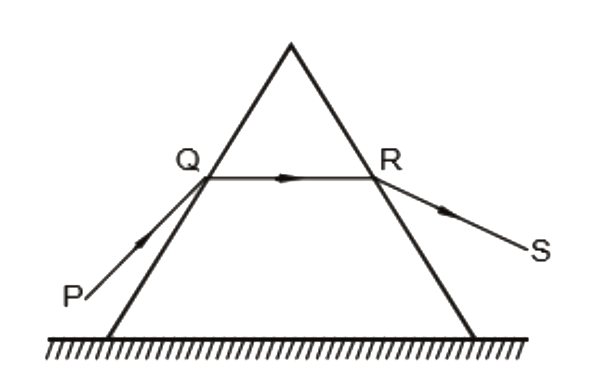Which of the following is not a prism?




To determine which of the given options is not a prism, we need to understand the definition of a prism and analyze the options provided.
1. Understanding the Definition of a Prism:
- A prism is a three-dimensional shape that has two identical bases (top and bottom) that are parallel and congruent. The sides connecting these bases are parallelograms (which can also be rectangles).
2. Identifying the Bases:
- The bases can be any polygon, such as a triangle, quadrilateral, pentagon, etc. The important aspect is that both bases must be identical shapes.
3. Analyzing the Options:
- Let's denote the options as A, B, C, and D.
- Option A: If this option presents two identical pentagons, it is a prism.
- Option B: If this option presents two different shapes (for example, a triangle on top and a square at the bottom), it is not a prism.
- Option C: If this option presents two identical triangles, it is a prism.
- Option D: If this option presents a cuboid (which has identical rectangular bases), it is a prism.
4. Conclusion:
- After analyzing all options, if Option B has different bases, then it is not a prism. Therefore, the answer to the question "Which of the following is not a prism?" is Option B.
- A prism is a three-dimensional shape that has two identical bases (top and bottom) that are parallel and congruent. The sides connecting these bases are parallelograms (which can also be rectangles).
- The bases can be any polygon, such as a triangle, quadrilateral, pentagon, etc. The important aspect is that both bases must be identical shapes.
- Let's denote the options as A, B, C, and D.
- Option A: If this option presents two identical pentagons, it is a prism.
- Option B: If this option presents two different shapes (for example, a triangle on top and a square at the bottom), it is not a prism.
- Option C: If this option presents two identical triangles, it is a prism.
- Option D: If this option presents a cuboid (which has identical rectangular bases), it is a prism.
- After analyzing all options, if Option B has different bases, then it is not a prism. Therefore, the answer to the question "Which of the following is not a prism?" is Option B.
Topper's Solved these Questions
Similar Questions
Which of the following is the net for a hexagonal prism?
View Solution
A ray of ligh is incident normally on one of the faces of right
angled isosceles prism as shhown above. It undergoes total
internal reflection from hypotenuse. Which on of the
following is the minimum refractive index of the material of
the prism?
View Solution
Knowledge Check
Which of the following options are correct regarding prism?
AA ray of light will not come out of a prism (whatever be the angle of incidence) if A>2C i.e.
if μ>cosec(A/2)BDeviation will be maximum when angle of incidence i is maximum i.e. i=90∘CIn case of minimum deviation
(i) angle of incidence i=angle of emergence i′
(ii) r=r′=A2
(iii) μ=sin(A+δm2)sin(A2)
(iv) If the prism is equilateral (or isosceles), the ray inside the prism will be parallel to its baseDAll options are correctWhich of the following figures shows a correct representations of deviation and dispersion of light by a prism?
A B
B C
C D
D
Which of the following is the correct set - up of protractor for tracing the path of ray of light through a glass prism, for measuring the angle of incidence ?
A B
B C
C D
D
A ray of light is incident on an equilateral glass prism placed on a horizontal table. Which of the following is true for the condition of minimum deviation ?

View SolutionFigure shows behavior of a wavefront when it passes through a prism.
Which of the following statements is/are correct ?

View SolutionWhich of the following colors pass through prism? (μB = 1.49, μG = 1.41,μR =1.27)

View SolutionFor an isosceles prism of angle A and refractive index μ, it is found that the angle of minimum deviation δm=A. Which of the following options is/ are correct ?
View SolutionFor an isosceles prism of angle A and refractive index μ it is found that the angle of minimum deviation δm=A. Which of the following options is/ are correct?
View Solution
